What post-Brexit UK can learn from the blockade of Qatar



(Reuters) – Russia and Qatar have been in discussions about a possible sale of S-400 missile systems to Doha, TASS news agency cited the Russian envoy to Qatar as saying on Saturday.
He also confirmed media reports that Qatar and Russia had signed a deal on supplying Qatar with small arms, such as Kalashnikov assault rifles, and anti-tank weapons.
“As far as the air defense is concerned, the S-400 systems and so on, there are talks about this, but there is no concrete conclusion,” Nurmakhmad Kholov, the ambassador to Qatar, was quoted as saying.
Kholov also told TASS the Qatari Energy Minister Mohammed al-Sada will take part in Moscow’s energy conference in October.

(Reuters) – Turkey’s biggest oil importer Tupras has cut back purchases of Iranian crude since May, when the United States said it would re-impose sanctions on Tehran, and analysts say Tupras is likely to stick to lower volumes in coming months.
NATO member Turkey depends heavily on imports to meet its energy needs and neighboring Iran has been one of its main sources of oil because of its proximity, crude quality and favorable price differentials, traders say.
In the first four months of 2018, Tupras, Turkey’s largest refiner, bought an average of 187,196 barrels per day of Iranian oil, data from Turkey’s energy watchdog EPDK showed.
In April alone, Tupras imported eight cargoes – equivalent to just over 240,000 bpd – from the OPEC member.
But since May, when President Donald Trump announced the re-imposition of U.S. sanctions on Tehran after pulling out of a 2015 nuclear deal, Tupras’s purchases of Iranian oil have gone down.
Tehran shipped four cargoes of crude oil per month to Tupras, equivalent to around 130,000 bpd, in May and June, tanker tracking and shipping data showed, down from six to eight earlier in the year.
So far in July, Tupras has bought three more cargoes.
The United States is due to re-instate sanctions on Iran’s energy sector after a wind-down period ends on Nov. 4.
An industry source said the U.S. decision was the main reason for the decline in Tupras’s purchases of Iranian oil since May, but said the company was likely to continue importing some Iranian crude, as it did when U.S. sanctions were previously in force.
“During the sanctions scheme of 2011 by the U.S., Tupras was able to purchase 3 to 4 cargoes of Iranian crude a month,” the industry source said.
“I believe they would want to be able to stick to that this time as well instead of completely stopping. This crude needs to be bought by someone as otherwise it will send the price shooting up, which nobody wants,” he said.
Refiners in other countries are affected by the sanctions because they want to maintain their access to the U.S. financial system. Indian refiners also cut imports of Iranian oil last month to avoid looming U.S. sanctions.
SANCTIONS WAIVERS
Trump initially planned to totally shut Iran out of global oil markets, demanding all other countries stop buying its crude by November.
The United States later said it may grant sanction waivers to some allies that are particularly reliant on Iranian supplies.
Most analysts still think the sanctions will significantly reduce Iran’s crude oil exports, with some forecasting as much as a two-thirds drop to 700,000 barrels per day (bpd).
Turkey has criticized the U.S. decision, saying Ankara will not cut trade ties with Iran at the behest of other countries.
After meeting a U.S. delegation in Ankara on Friday, the Turkish foreign ministry said authorities were working to avoid the U.S. sanctions from harming Turkey.
In the past, whenever Turkey has needed to cut back on Iranian oil, Iraqi crude emerged as the alternative. Analysts say that is again likely to be the case in the coming months.
“Iran and Iraq have traditionally been Turkey’s two biggest crude oil suppliers,” Cuneyt Kazokoglu, head of oil demand at consulting firm FGE, said. “It won’t be a surprise to see more Basra barrels flowing to Turkey,” he said.
In the first four months of the year, Turkey imported an average of 39,768 bpd of Iraqi oil.
In the whole of 2017, Iraq was Turkey’s third biggest supplier of crude after Iran and Russia, with 7 million tonnes of oil, equivalent to around 141,000 bpd.
(Reporting by Humeyra Pamuk; Editing by Adrian Croft)
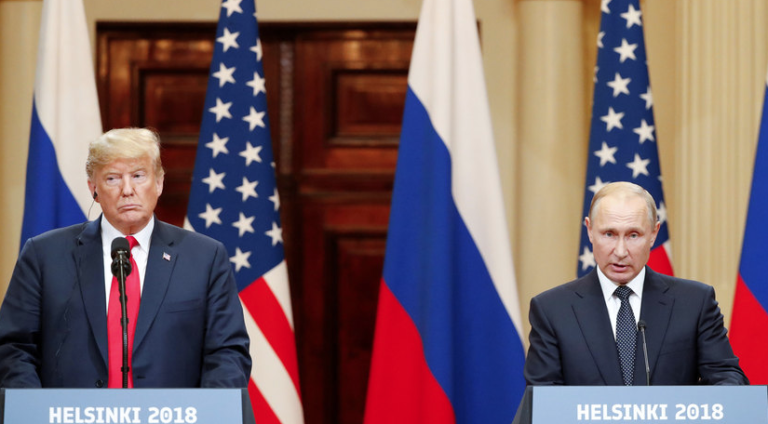
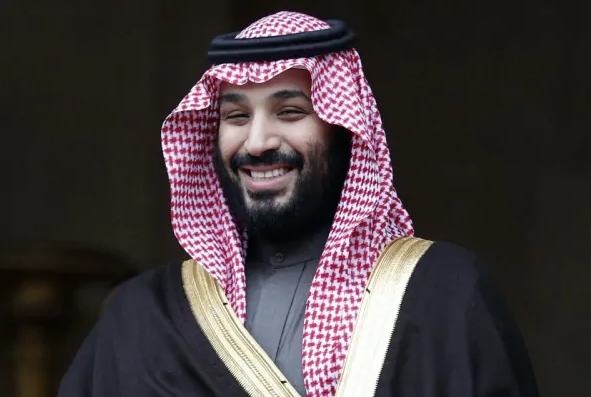
Abdullah Alaoudh is a postdoctoral fellow in Islamic law and civilization at Yale University Law School and senior fellow at Georgetown University’s Center for Muslim-Christian Understanding.
Since Saudi Arabia’s current regime was established in the 1930s, a chain of kings and crown princes has either promised or attempted to implement some sort of democratic mechanisms.
However, the current crown prince, Mohammed bin Salman (or MBS, as he is commonly referred to), who is positioned as the kingdom’s leader among the royal family’s newest generation, seems intent upon taking the kingdom back to the norms of pre-modern Saudi Arabia. He has endorsed absolute monarchy more firmly and vociferously than any of his predecessors.
In an interview with the Atlantic, MBS stated that “absolute monarchy is not a threat to any country.” He added: “If it were not for absolute monarchy, you wouldn’t have the United States. The absolute monarchy in France helped the creation of the United States by giving it support. Absolute monarchy is not an enemy of the United States. It’s an ally for a very long time.”
MBS failed to note that the Colonies were revolting against an absolute monarchy. With this declaration, MBS fully embraced a pre-modern stance that had been abandoned by almost all of his predecessors, including his grandfather, King Abdulaziz, the founder of contemporary Saudi Arabia. In preaching absolute monarchy and abandoning even the mere promise of democracy, MBS’s approach to the monarchy is even more antiquated than his grandfather’s.
In 1924, when King Abdulaziz conquered the Hijaz, one of the most important regions of the Arab peninsula where Mecca is located, he promised an elected council, participatory politics based on the Islamic doctrine of consultation, and absolute freedom. King Abdulaziz denounced fake elections, a nominal parliament and unfulfilled promises to the people. In the elected council that he proposed, the elected members would have the power to check executive action, approve the budget and propose legislation. In 1926, King Abdulaziz drafted a constitution-like document that provided the theoretical framework for a degree of accountability and power-sharing.
This gesture toward constitutionalism was ultimately unrealized, but hope and the theoretical framework for democracy persisted. During the reign of King Saud, the first king among the sons of Abdulaziz, the proposal for transforming the system into a constitutional monarchy was nearly implemented. Prince Talal bin Abdulaziz published “A Letter to the Citizen” that contained the basic elements for the proposed constitutional monarchy that was to be implemented by 1960. In the proposed constitution, general human rights and freedoms were to be protected. The proposed constitution also protected the right to establish unions and guilds, a right never protected or incorporated in any subsequent Saudi Arabian legislation. When King Faisal was officially inaugurated in 1964, the constitutional project was aborted.
In 1975, then-crown prince Fahd affirmed Islam’s democratic basis, and when he became a king in 1982, he promised a parliament-like council and popular elections. It never happened. Fahd’s brother Abdullah, at the time crown prince, revived the promises for democracy and constitutional monarchy in 2003, after a number of intellectuals and activists from all sides of the political spectrum signed a petition directed to him entitled “A Vision for the Nation’s Present and Future.” The petition demanded elections, the separation of powers, human rights guarantees and an end to arbitrary detentions in the kingdom. When representatives of the group met with crown prince Abdullah, he commented on their petition, saying, “Your vision is my vision, and your project is mine.”
Several similar petitions followed. The most popular one, “Toward the State of Rights and Institutions,” was presented by my father, prominent scholar Salman al-Awdah (who has been in prison since last September), and some of his friends and signed by several thousand citizens, including me and many members of my family. The petition marked the climax of the popular activism in Saudi Arabia for constitutional monarchy and democracy in Saudi Arabia. The phenomenon, commonly referred to as the Arab Spring, likely served as a catalyst for the petition’s popularity. Yet this time, Abdullah, who had assumed the throne but has since passed away, offered no promise for democracy.
Thirty-two-year-old MBS has promised nothing but a long reign of absolute monarchy and a firmer grip on power. While ironically promising a bright economic future embodied by his initiative for a 21st-century city, Neom, he has also promised religious regression, all the way back to the conditions that resulted in the country’s most infamous terrorist attack in 1979.
Previous kings and crown princes were not eager to embrace democracy either and may not have moved honestly toward it, but their maneuver of accepting democracy as an end allowed for some healthy interaction between the people and the kings to take place. With such interactions, there was always a great chance to establish a meaningful social contract between the people and the royal family for a foundation for a more stable and democratic future.
The change of mind-set with MBS toward embracing eternal absolute power marks a dramatic shift from past democratic promises that offered some hope for the future, even though none of them were ever fulfilled. The new Saudi administration has gained positive press for its futuristic rhetoric, including talk of a robotically manned city, and for allowing women to drive. But make no mistake: We are witnessing a return to Saudi Arabia’s past. In abandoning the promise of democracy, the crown prince may actually be on his way to making Saudi Arabia more medieval than ever.
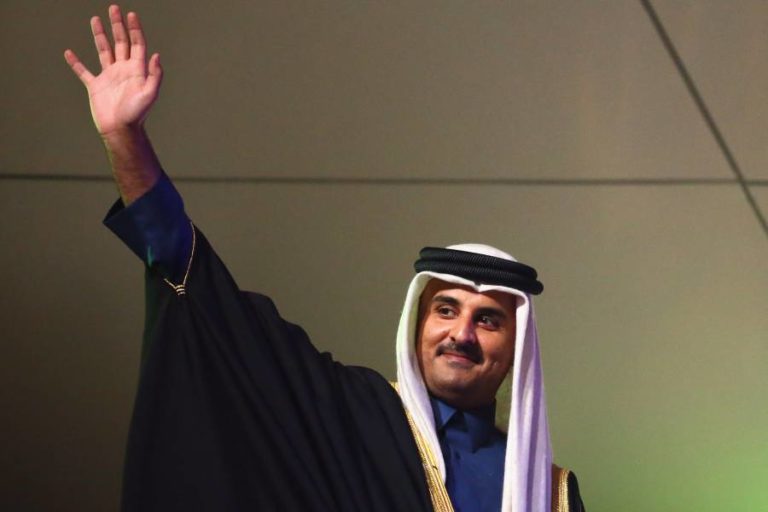
A più di un anno di distanza la conclusione sembra evidente: l’embargo di Arabia Saudita, Barhein, Egitto, e Emirati Arabi Uniti ai danni del Qatar, non ha certo piegato piegato l’emirato del Golfo persico.
Ripercorriamo i fatti. La vicenda è iniziata nel giugno 2017. I paesi sopra citati -asserendo una presunta vicinanza qatariota ad alcune organizzazioni terroristiche- hanno imposto al Qatar di soddisfare una lista di 13 richieste, tra le quali la chiusura dell’emittente televisiva Al Jazeera, l’interruzione dei rapporti con l’Iran, e la chiusura della base militare turca a Doha. Richieste che al governo di Doha sono apparse come una violazione della sovranità nazionale. Al comprensibile diniego del Qatar è seguito l’embargo nei confronti del piccolo emirato del Golfo Persico, vale a dire la chiusura delle vie di rifornimento verso il paese (tra cui quella di ben 18 corridoi aerei), e delle rotte navali verso il porto di Dubai. L’ostilità del blocco dei quattro paesi poteva creare non pochi problemi a Doha, ma, appunto, a un anno di distanza a quanto pare l’isolamento del Qatar non è riuscito.
Vari testimoni internazionali concordano nel sottolineare l’inaspettata resilienza del Qatar in questa situazione di crisi. Infatti, nonostante le difficoltà, l’economia del Qatar sembra tenere. La disoccupazione è rimasta praticamente assente. Qualche settimana fa Banca nazionale del Qatar ha aggiornato le previsioni di crescita economica per il 2018 a 2,8 punti percentuali, un valore di tutto rispetto. Il Qatar ha continuato a sfruttare le sue enormi riserve di gas e petrolio, dato che i suoi principali partner commerciali in questo settore non sono altri paesi arabi, ma Giappone, Corea del Sud, Cina e India. Il fondo sovrano qatariota ha investito decine di miliardi di dollari nell’economia. E tra l’altro è stato varato un corposo piano per la costruzione di nuove infrastrutture, anche legato ai Mondiali di calcio del 2022 che si terranno proprio in Qatar.
A livello internazionale, poi, la chiusura dei quattro paesi promotori dell’embargo ha comportato l’apertura di maggiori canali diplomatici, commerciali, di relazione con la Turchia, con l’Iran e con la Russia. Del resto il blocco dei paesi contrapposti al Qatar è incrinato anche dal Kuwait e dall’Oman, nient’affatto sfavorevoli al Qatar.
Su un fronte più ampio, poi, anche gli Usa hanno virato in maniera decisa verso una posizione favorevole al Qatar. In varie occasioni Mike Pompeo, segretario di Stato americano, si è dichiarato favorevole a una risoluzione del contenzioso, in accordo col presidente Donald Trump. A proposito dell’atteggiamento dei sauditi nei confronti del Qatar Pompeo ha dichiarato: «Quel che è troppo è troppo». Tra l’altro anche l’Italia ha recentemente dichiarato, per bocca del ministro degli esteri, Enzo Moavero Milanesi, di voler intensificare le relazioni commerciali con il Qatar.
In breve, sarebbe ora che gli attori internazionali nell’area, e non solo, prendessero coscienza del fatto che isolare il Qatar non è stata una buona mossa, e che è opportuno fare la giusta pressione diplomatica a livello internazionale per una soluzione della questione.

resident Donald Trump’s son-in-law Jared Kushner is being accused by Democratic National Committee (DNC) lawyers of avoiding a court summons from a lawsuit alleging that the Trump campaign conspired with Russia against Hillary Clinton in the 2016 presidential election.
Kushner, who serves as a senior White House adviser, has dodged being served the summons at least a half-dozen times since last month, DNC lawyers claimed in a court filing Tuesday.
Lawyers had no success in three attempts to deliver the documents in June, because someone at Kushner’s apartment in Manhattan would not accept them.
At Kushner’s home in Washington, D.C., a Secret Service agent told the process server to “figure out another way to attempt service,” CNN reported. In late June, lawyers sent the documents by certified mail to Kushner, but the U.S. Postal Service said no one was home to sign and they were returned to the sender.
Finally, a process server in Manhattan “tried to serve the doorperson, security guard, or mail clerk at Kushner’s New York residence, or alternative to affix a copy of the service packet to Kushner’s door, but the staff at Kushner’s building did not accept service,” the DNC stated in the court filing.
Joseph Sellers, an attorney representing the DNC, asked the court on Tuesday if the summons could be mailed first-class to Kushner’s house in Washington, D.C. “Plaintiff’s counsel is confident that Kushner and his family live there. Mail sent to that address is reasonably calculated to reach him,” Sellers wrote, according to Politico.
But U.S. District Court Judge John Koeltl denied Sellers’s motion on Wednesday on the grounds that the DNC “has not yet established the impracticability of other means of serving Kushner,” and suggested they try Kushner’s lawyer.
“Service is not intended to be a game for the serving party or the party to be served,” Koeltl wrote. “The court is confident that the DNC’s counsel can contact Kushner’s counsel and arrange a mutually convenient means to effectuate service.”
A lawyer for Kushner and the White House did not immediately respond to requests for comment from Newsweek on Wednesday.
The DNC sued the Trump campaign, Russia and WikiLeaks in April, alleging they interfered in the election in a “brazen attack on American democracy.” Beside Kushner, defendants include Trump’s former campaign manager Paul Manafort and former adviser Roger Stone.
The accusation against Kushner arrived as Trump is scrutinized for having failed to criticize Russian President Vladimir Putin in a joint press conference days after the Justice Department indicted 12 Russians as part of special counsel Robert Mueller’s investigation into Russian meddling in the election.
WASHINGTON, July 20 (Reuters) – The U.S. oil and gas industry is lobbying against tighter sanctions on Russia that could impact U.S. investments there, congressional sources said on Friday.
The U.S. Senate has revived a bill, called DETER, that would allow for swift sanctions if Moscow was found meddling in future U.S. elections. Both Democrats and Republicans are looking to redress what they consider President Donald Trump’s weak stance on accusations of Russian interference in the 2016 election when he met Russian President Vladimir Putin on Monday.
Top U.S. energy company Exxon Mobil is among the firms that have previously opposed U.S. sanctions on Russia. Opponents claim sanctions unfairly penalize U.S. companies while allowing foreign energy rivals such as Royal Dutch Shell and BP to operate in the world’s biggest oil producer.
Western powers imposed sanctions in 2014 after Russia’s annexation of Crimea.
Democratic Senator Chris Van Hollen told Reuters on Friday there was growing bipartisan support for his DETER bill.
When asked whether energy industry lobbyists were either opposing the bill or seeking revisions, Van Hollen said that “a range of issues need to be discussed including … ones related to U.S. and European energy projects.”
Van Hollen said that while he was willing to address “reasonable concerns” from industry representatives and other lawmakers, the legislation needed to be robust enough to discourage Moscow from meddling in future U.S. elections.
He said he had not been directly contacted by energy lobbyists.
Lobbyists representing oil and gas firms with interests in Russia were opposing the legislation, two Senate aides said. They did not mention specific companies and spoke anonymously because private conversations were still underway.
One of the Senate aides said the U.S.-Russia Chamber of Commerce was raising concerns about the legislation.
The chamber describes itself as a non-profit organization headquartered in Houston that promotes trade between Russia and the United States. Its members include Shell, Exxon Mobil, and Chevron.
Chamber representatives and the three energy companies did not respond to requests for comment.
Exxon has already taken a hit because of sanctions. In February, the firm said it would exit some joint ventures with Russia’s Rosneft.
The company still has operations in Russia, including an oil venture on an island in the North Pacific called Sakhalin. (Reporting by Richard Cowan and Timothy Gardner, Writing by Richard Cowan Editing by Mary Milliken and Rosalba O’Brien)
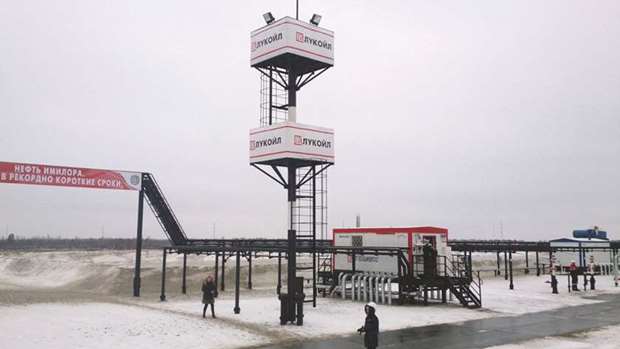
Bloomberg/Kuwait
Opec and its allies are raising output to keep world markets adequately supplied, yet remain divided on how much each country should produce.
During a conference call on Wednesday, oil ministers discussed how much they planned to pump in July, while side-stepping more contentious questions about production quotas, according to people familiar with the matter. Technical experts meeting the same day failed to reach a recommendation on how the supply increase should be distributed among members amid disagreements between Saudi Arabia and Iran, they said.
As far as global oil markets are concerned, the differences between the two might not matter immediately, as Saudi Arabia and Russia press on with increasing production regardless. Yet, a prolonged clash risks shattering Opec’s hard-earned cohesion after it worked with its allies to bring crude out of the biggest price-slump in a generation.
Further production increases from the Saudis are almost certainly on the way. The kingdom has told fellow producers that its output will be slightly higher this month than in June, the people said.
It had reported 10.489mn barrels a day of output for last month, not far from the record reached in 2016. Russia has also signalled it’s pumping more.
Getting a formal blessing from the Organization of Petroleum Exporting Countries for these increases is proving more difficult.
Although Opec and its partners — led by Russia — agreed to boost output last month to cool rallying prices, the size of the increase was contested. For Russia and the Saudis, it was about 1mn barrels a day. To Iran, which is seeing its exports slide amid renewed US sanctions, it was much less.
The dispute flared again at Wednesday’s committee meeting in Vienna, when Iran’s representative repeated the country’s position that output limits assigned in late 2016 still apply and countries shouldn’t exceed these, according to people familiar with the talks, who asked not to be identified as the discussions are private.
Supply increases by the Saudis and Russia are compensating for losses elsewhere in the coalition, particularly in Venezuela, and bringing the alliance closer to its target. Higher production from these two means overall compliance of Opec+ with the output levels agreed in 2016 was 121% in June compared with 147% in May, according to data from the committee.
US President Donald Trump is exacerbating the Saudi-Iran split by pressing Riyadh to replace Iranian shipments that he intends to partially shut down through sanctions. While the Saudis seem to be paying heed by offering extra cargoes to some buyers in Asia, Iran has said Opec should defy US demands.
Saudi Arabia has indicated a production level of 10.5mn barrels a day in July. That would actually be slightly lower than expected as the kingdom was on track to reach 10.8mn, people briefed with production policy said late last month.
As for whether Opec can smooth out the differences between the Saudis and Iran, settle on individual country limits, and preserve its unity, ministers will hold another teleconference next month and meet in person in Algiers in late September.
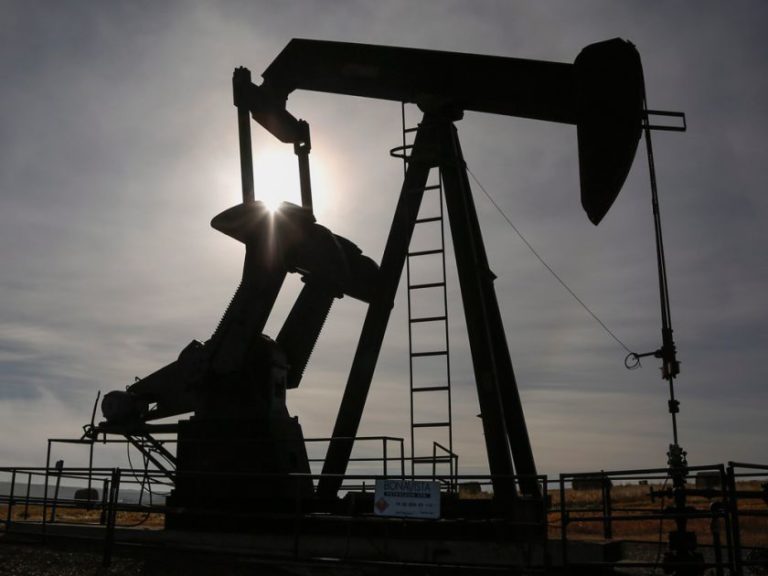
The organization’s legal team will hold talks in the coming days with law firms including White & Case about the “No Oil Producing and Exporting Cartels Act,” one of the people said, asking not to be identified because the information is not public. The cartel is seeking strategy recommendations for dealing with the NOPEC bill, which could allow the U.S. government to sue it for manipulating energy prices, the person said.
A spokesman for White & Case declined to comment.
The planned meeting highlights the growing pressure on the Organization of Petroleum Exporting Countries from the world’s largest oil consumer. President Donald Trump has repeatedly criticized the group on Twitter, accusing it of inflating prices and urging it to increase production. The cartel has bowed to Trump’s will, pledging last month to add about 1 million barrels a day of crude to the market, yet lawmakers have continued to push NOPEC forward.
The House of Representatives introduced a version of the bill in May. The Senate earlier this week also brought up a draft of the legislation, which would amend the Sherman Antitrust Act of 1890. That’s the law used more than a century ago to break up the oil empire of John Rockefeller.
OPEC pumps about a third of the world’s crude, and the biggest of its 15 members is Saudi Arabia, one of America’s closest friends in the Middle East. While the group doesn’t target a specific oil price, it adds or removes supplies in the market and therefore can affect the cost of crude. Since January 2017, the group and allies including Russia have cut production by about 1.8 million barrels a day, helping to lift international prices to a three-year high of more than $80 a barrel in May.